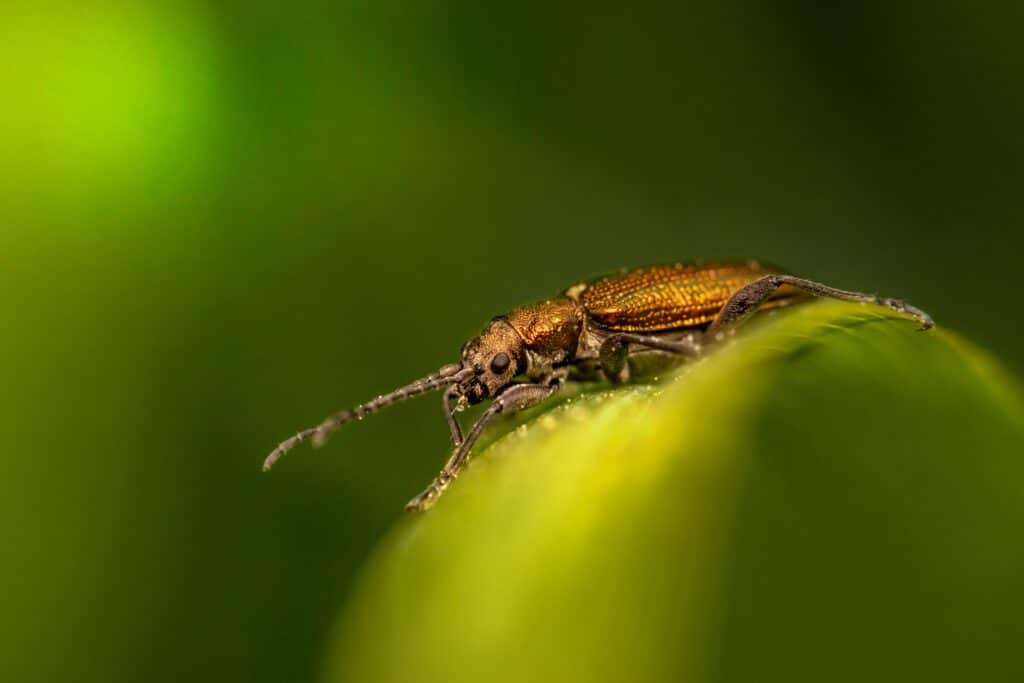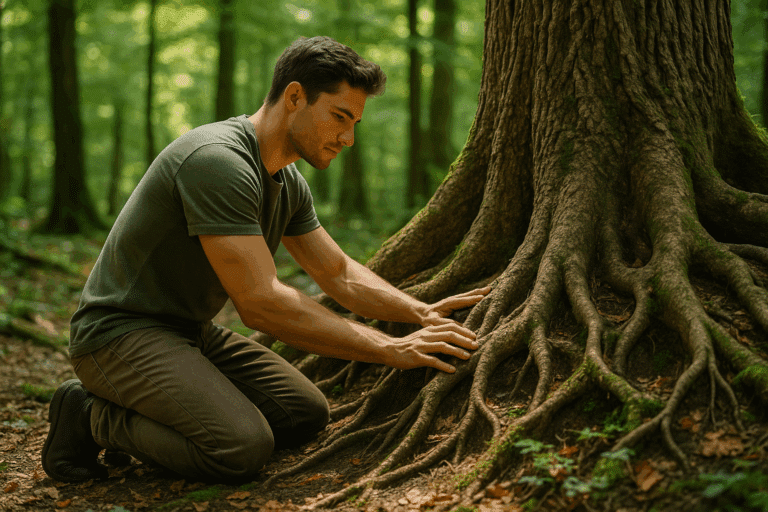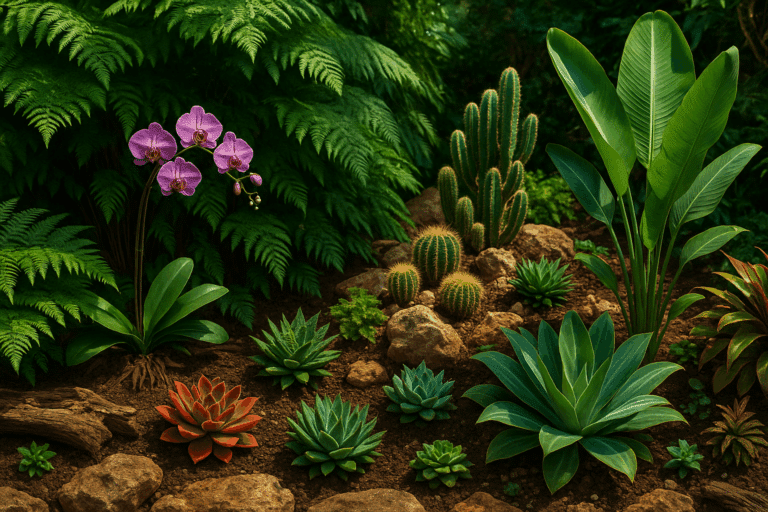This charming plant is the ideal addition to your indoor oasis, combining visual appeal with easy care. In this write-up, we’ll be diving into the world of Fiddle Leaf Fig, exploring its many benefits, and offering guidance on how to nurture it successfully within your living space.

One can’t help but be captivated by the Fiddle Leaf Fig’s aesthetic appeal. With its dramatic, fiddle-shaped leaves and towering stature, it not only enhances the ambiance of your interior space but also plays an essential role in improving your well-being. So, let’s get ready to unmask the secrets behind maintaining this indoor beauty.
How to cater to the needs of a Fiddle Leaf Fig Starter? How to ensure its healthy growth indoors? These are some questions that might be surfacing in your mind. As we move forward, we’ll be addressing these queries, discussing the ideal conditions, proper watering, feeding, and light requirements that contribute to a thriving Fiddle Leaf Fig.
Indoor plants like the Fiddle Leaf Fig are much more than just pretty faces. Beyond the aesthetic appeal, they offer numerous health benefits, including air purification and mood enhancement. Unraveling these aspects, we’ll look at how the inclusion of this green friend can contribute to a healthier and happier living space.
Lastly, we’ll delve into some common problems associated with the Fiddle Leaf Fig Starter, guiding you on how to diagnose and address issues ensuring your plant stays vibrant and lush. So, whether you’re a novice indoor gardener or a seasoned green thumb, let’s journey together into the exciting realm of Fiddle Leaf Fig care. 🌿
Soil Preferences and Potting Considerations
Choosing the right soil is fundamental to ensuring a thriving Fiddle Leaf Fig. This plant prefers a well-draining potting mix that retains enough moisture without becoming waterlogged. A standard indoor potting soil amended with perlite, bark chips, or coarse sand provides the ideal structure for root development. Avoid soils that retain excessive moisture, as this can quickly lead to root rot—a common issue for this species.
When potting your Fiddle Leaf Fig, ensure the container has adequate drainage holes. Clay pots are particularly helpful, as they allow for breathability and help prevent the soil from staying overly moist. Regularly inspect the bottom of the pot for signs of compacted roots, which indicate the need for repotting.
Fertilization and Nutrient Needs
Fiddle Leaf Figs are relatively slow growers, but they benefit greatly from a consistent fertilization routine. Use a balanced, water-soluble fertilizer with equal parts nitrogen, phosphorus, and potassium (NPK 10-10-10 or 20-20-20). Apply the fertilizer once a month during the active growing season—typically from spring through early fall.
Avoid fertilizing during the winter months when the plant’s growth naturally slows. Over-fertilization can lead to nutrient burn, indicated by browning leaf tips or white crust on the soil. If you notice these signs, flush the soil with water to remove excess salts and reduce the feeding frequency.
Leaf Cleaning and Shine
One of the standout features of the Fiddle Leaf Fig is its dramatic, glossy leaves. However, dust accumulation can block sunlight and reduce photosynthesis. Gently wipe the leaves with a damp, soft cloth every two to three weeks to keep them clean and shiny. This not only enhances the plant’s appearance but also helps it absorb light more efficiently.
Avoid using commercial leaf shine products, which may clog the leaf pores. Instead, a solution of diluted neem oil can serve both as a cleaner and a natural pest deterrent, keeping your plant healthy and gleaming.
Propagation: Creating New Fiddle Leaf Figs
In addition to air layering and stem cuttings, there are other propagation techniques that allow you to multiply your Fiddle Leaf Fig collection. The most accessible method for home growers remains stem cutting propagation, but with added rooting hormone and a controlled environment, even challenging cuttings can thrive.
For best results, place cuttings in a humid propagation chamber or cover them loosely with a plastic bag to maintain humidity. Monitor for fungal growth and ensure adequate airflow to avoid mildew. Once rooted, transfer them to a small pot and gradually acclimate to normal indoor conditions.
Seasonal Growth Patterns
Understanding the Fiddle Leaf Fig’s seasonal growth cycle can enhance care. During spring and summer, expect new leaves to emerge more frequently and increased height growth. This is the ideal time for pruning, fertilizing, and repotting.
In autumn, growth begins to slow, and watering should be gradually reduced. By winter, the plant may go dormant, and leaf production may pause entirely. During this time, avoid unnecessary disturbance—no repotting, pruning, or heavy feeding. Simply maintain consistent light and moderate moisture to support healthy dormancy.
Fiddle Leaf Fig Troubleshooting Guide
Even with proper care, problems can arise. Yellowing leaves typically indicate either overwatering or nutrient deficiency. Evaluate both your watering routine and fertilization schedule. Brown edges often signal underwatering or low humidity. Mist your plant occasionally or use a pebble tray to increase local humidity.
A sudden leaf drop can be alarming but is often due to environmental stress, such as relocation, drafts, or abrupt changes in light. Fiddle Leaf Figs are sensitive to being moved and may take several weeks to acclimate to a new setting.
Training Your Fiddle Leaf Fig: Staking and Shaping
As Fiddle Leaf Figs grow, they may become top-heavy or develop uneven canopies. Training the plant early helps achieve a strong, balanced form. Use a moss pole, stake, or trellis to encourage upright growth, especially for single-stem plants.
To create a bushier plant, pinch off the top set of leaves when the plant reaches the desired height. This stimulates branching and gives the tree a fuller appearance. Regular rotation of the pot ensures even exposure to light and prevents the plant from leaning in one direction.
Pest Management and Natural Remedies
Like many indoor plants, Fiddle Leaf Figs can occasionally attract pests. The most common are spider mites, scale insects, aphids, and mealybugs. These pests can weaken the plant by sucking sap and spreading disease. If left unchecked, infestations can become severe.
The first step in pest management is early detection. Regularly inspect the undersides of leaves and around the base of the stem. If pests are found, isolate the plant immediately. Wipe the affected areas with rubbing alcohol or a neem oil solution. For persistent infestations, an insecticidal soap spray applied weekly can control most pests without harming the plant.
Creating a Wellness Corner with Fiddle Leaf Fig
Incorporating a Fiddle Leaf Fig into your wellness space enhances the ambiance and supports relaxation. The lush, green foliage adds a touch of the outdoors, which studies have shown to improve mental clarity and reduce stress. Pairing your fig with other calming elements like a diffuser, cozy textiles, or natural light enhances the aesthetic and functional value of your indoor oasis.
You might also consider grouping your Fiddle Leaf Fig with other houseplants, such as peace lilies, snake plants, or pothos, to create a full indoor garden effect. This not only boosts the visual appeal but also increases the air-purifying capacity of your home.
Environmental Adaptability and Light Experimentation
One of the most exciting aspects of caring for a Fiddle Leaf Fig is experimenting with its environment. Though they prefer indirect sunlight, some individuals thrive near east-facing windows with gentle morning light. Others adapt to filtered southern exposures.
Try repositioning your plant occasionally to find the best light quality and intensity. Be observant—if new leaves are smaller or the plant stops growing altogether, this could be a sign of insufficient light. Supplement with a grow light if natural light is limited, especially in winter months.
Propagating the Fiddle Leaf Fig
Growing your indoor oasis with a Fiddle Leaf Fig starter is a simple and rewarding task. The plant can be propagated using either stem cuttings or by air layering.
Propagating by Stem Cuttings
- Start by identifying a healthy, mature leaf on the plant. Ensure the leaf has an attached stem about 1-3 inches long.
- Using a sharp, clean pair of pruning shears, make a cut on the stem. Dip the cut end in a rooting hormone, which helps stimulate root growth.
- Place the cutting in a container filled with well-draining soil mix. Water it thoroughly.
- Place the container in a location with bright, indirect light and keep the soil moist. In a few weeks, new roots should start to develop.
Propagating by Air Layering
Air layering is another effective propagation method, particularly for larger plants. This method involves wounding the plant stem, encouraging it to produce roots before cutting it off the parent plant.
Maintaining the Fiddle Leaf Fig
Proper maintenance is key to the long-term health and aesthetic appeal of the Fiddle Leaf Fig. This involves regular pruning, repotting when necessary, and keeping an eye out for pests and diseases.
Pruning and Shaping
Regular pruning helps maintain the Fiddle Leaf Fig’s shape, encourages bushier growth, and removes any unhealthy leaves. It’s best to prune in the spring or early summer when the plant is in its active growth phase.
Repotting
The Fiddle Leaf Fig generally requires repotting every 1-2 years. Signs that your plant may need repotting include roots growing out of the drainage holes, slow growth, or the plant becoming top-heavy.
Dealing with Pests and Diseases

Common pests that can affect Fiddle Leaf Figs include mealybugs, spider mites, and aphids. Regularly inspecting the leaves and promptly addressing any infestations can prevent significant damage. Similarly, diseases like root rot or leaf spot should be treated promptly to maintain the health of the plant.
By understanding and catering to the Fiddle Leaf Fig’s needs, you can easily grow and maintain this beautiful plant, adding a touch of tropical charm to your indoor space.
Conclusion
In conclusion, growing your indoor oasis with a Fiddle Leaf Fig Starter is not just a hobby but an immersive journey of aesthetic appeal and tranquility. These plants, with their verdant leaves and striking silhouette, not only enhance your space’s visual appeal but also boost your well-being with their air-purifying qualities. They require minimal care, making them perfect for both green-thumbed enthusiasts and busy urbanites.
The ease of maintaining a Fiddle Leaf Fig, combined with its aesthetic allure, makes it a coveted addition to any indoor space. By adhering to the simple care instructions, you can ensure your Fig thrives, creating a serene, green ambiance in your home or office.
Indeed, the Fiddle Leaf Fig Starter is a testament to the wonders of nature that can be experienced, even within the confines of our urban dwellings. So why wait? Start your indoor gardening journey today with this easy-care, stylish plant, and bask in the serenity and aesthetic appeal it brings to your space.
So, whether you’re an experienced gardener or a novice, give the Fiddle Leaf Fig Starter a chance to bring an element of the outdoors into your home. With its easy care and aesthetic appeal, you won’t be disappointed.
As you continue your journey with the Fiddle Leaf Fig, you’ll begin to appreciate not just the beauty it brings to your space, but the subtle changes it encourages in your lifestyle. Caring for plants like the Fiddle Leaf Fig cultivates patience, attentiveness, and a deeper connection with nature—qualities that often go overlooked in fast-paced modern living. Watching a new leaf unfurl or noticing your plant respond positively to its environment fosters a sense of fulfillment that is uniquely grounding.
Moreover, incorporating greenery into your home design does more than add visual flair. Research shows that having plants indoors improves concentration, boosts mood, and even lowers stress levels. The Fiddle Leaf Fig, with its impressive presence and vibrant foliage, becomes not just décor but a wellness companion—one that silently supports your mental and emotional space.
Interior designers frequently turn to the Fiddle Leaf Fig when seeking a statement piece that bridges natural aesthetics with contemporary styling. Its architectural form fits beautifully into minimalist interiors, boho chic corners, or even upscale office environments. Whether standing alone in a stylish pot or paired with other houseplants for a lush indoor jungle effect, the Fiddle Leaf Fig elevates any room it inhabits.
For those who work from home, positioning your Fiddle Leaf Fig near your desk or within your visual field can subtly influence your mindset. The plant’s rich green tones and symmetrical shape contribute to a more calming workspace, offering gentle visual rest during digital breaks. In this sense, it becomes part of your productivity ecosystem—not just a plant, but a silent supporter of your daily routine.
Another benefit lies in the Fiddle Leaf Fig’s versatility. It grows with you—literally. As your plant matures, it adapts to its container and surroundings, reflecting your ongoing care and commitment. Over time, it becomes more than just a plant you purchased; it becomes a living chronicle of your indoor gardening experience, quietly growing as you grow.
If you share your space with others, such as family, roommates, or guests, the Fiddle Leaf Fig often becomes a talking point. Visitors frequently admire its bold leaves and elegant stature, asking for tips or sharing their own experiences with houseplants. In this way, your Fiddle Leaf Fig also becomes a point of connection—bridging people through shared appreciation of natural beauty and care.
Ultimately, the Fiddle Leaf Fig Starter offers more than meets the eye. It’s a conversation starter, a mood enhancer, a sculptural design element, and a long-term botanical companion. With consistency and a touch of care, this plant rewards its owners not only with growth and foliage, but with a heightened sense of harmony in their surroundings.
So go ahead—make space for your Fiddle Leaf Fig. Watch it thrive in the filtered light of your window. Let it remind you daily of the beauty in slow, steady progress. You’re not just bringing home a plant; you’re nurturing an atmosphere, a feeling, and a bit of green serenity that will grow with you for years to come.



